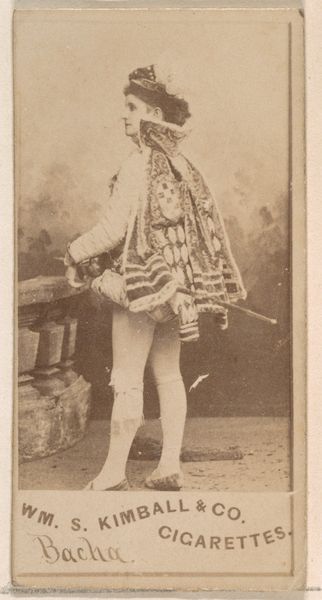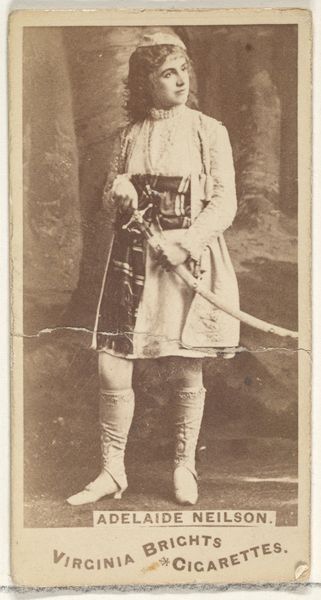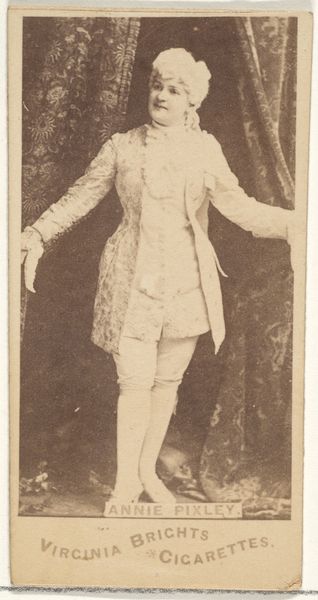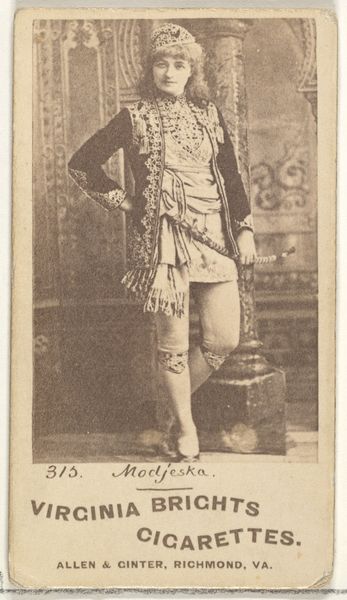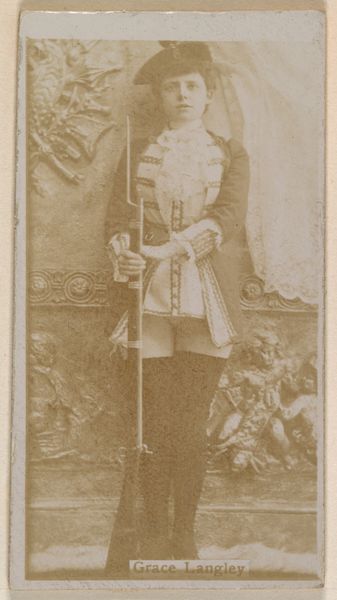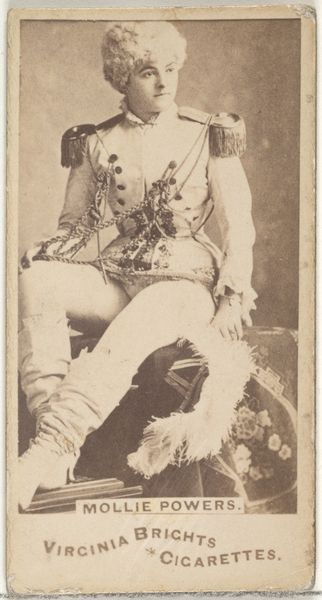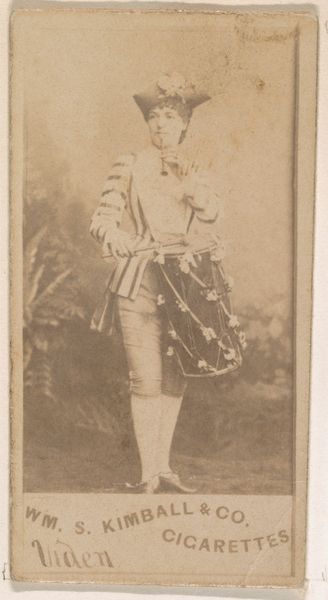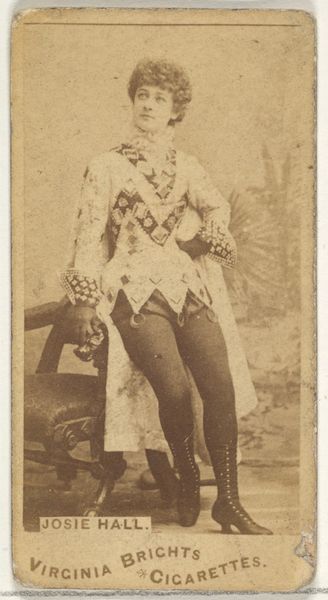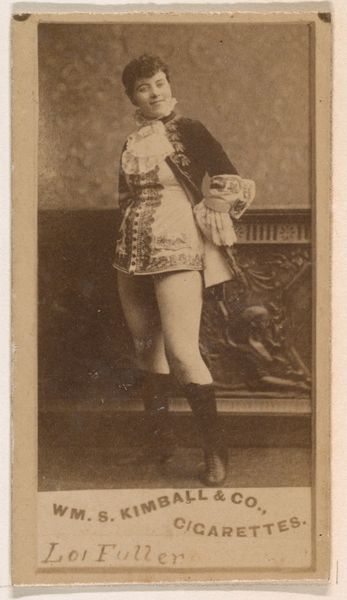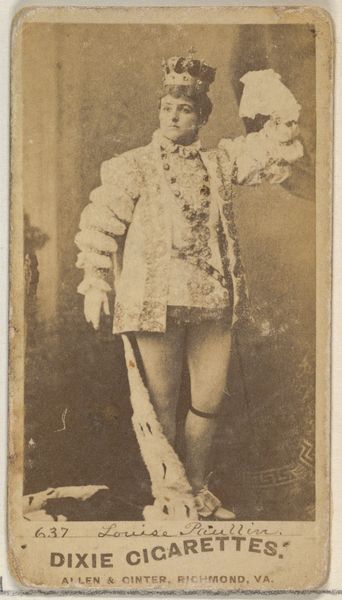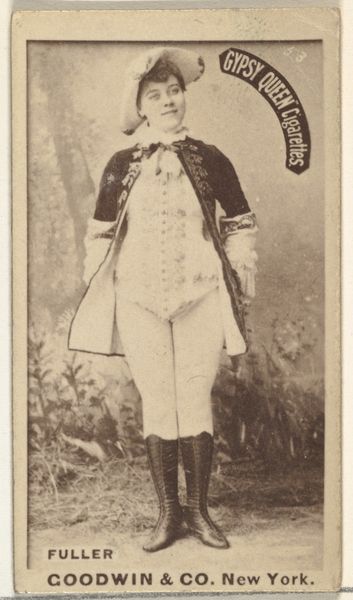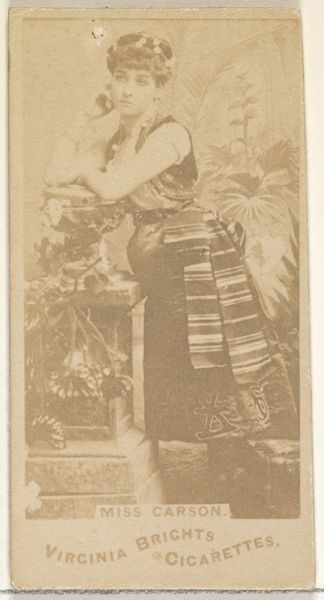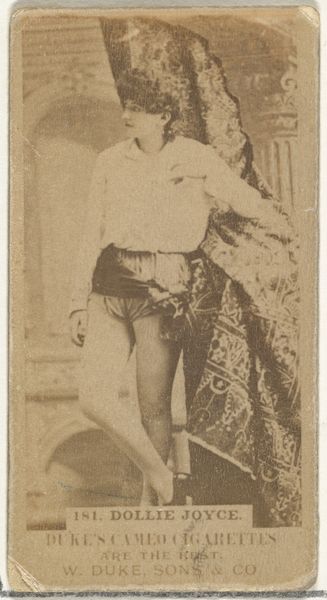
Prud'hon, Comedie Francaise, from the Actors and Actresses series (N45, Type 1) for Virginia Brights Cigarettes 1885 - 1891
0:00
0:00
drawing, print, etching, photography
#
portrait
#
drawing
# print
#
etching
#
photography
#
19th century
Dimensions: Sheet: 2 3/4 x 1 3/8 in. (7 x 3.5 cm)
Copyright: Public Domain
Curator: We’re looking at a photographic print produced between 1885 and 1891. It’s from a series called “Actors and Actresses” issued by Allen & Ginter for Virginia Brights Cigarettes and depicts the French stage actor Prud'hon, "Comedie Francaise". Editor: The figure looms rather theatrically against a pale backdrop, his garb heavily ornamented and excessively fluffy; yet, it strikes me as strangely delicate, despite its historical trappings. Almost faded in appearance. Curator: Well, the choice of etching as a reproduction method would lend that antique quality. Etching allowed for mass production, certainly. This photograph, translated into an etching, then circulated within cigarette packs. It collapses notions of art and consumer goods. Editor: He's performing a particular vision of status, isn't he? The wig, the heavily decorated coat, even the walking stick: they're all signifiers, practically props that speak to the symbolism of wealth, accomplishment, even dominance onstage. Curator: Precisely! The means of image distribution becomes key. The fact that it was used as a promotional item affects its social and artistic worth, don't you think? Imagine how many hands touched it, how disposable it might have seemed... Editor: The ephemeral nature makes the preservation all the more significant. Even now, in the museum collection, it carries weight as a relic, proof of a certain theatrical taste, the material embodiment of the era’s desires, and our desires looking back. But, ultimately, there’s a tension for me: between what we understand and what is knowable from the image itself. It evokes history in the vaguest sense, and I suppose this very ambiguity is its strength. Curator: Yes! It brings into play class distinctions and consumption patterns from the late 19th century that one might easily overlook. It reveals something fundamental about that moment. Editor: Absolutely, I've enjoyed revisiting how historical performance encodes social standing, and how images can both immortalize and obscure meaning over time. Curator: Likewise, it’s intriguing how something mass-produced ends up speaking volumes about social structures and labor behind visual imagery of actors.
Comments
No comments
Be the first to comment and join the conversation on the ultimate creative platform.

